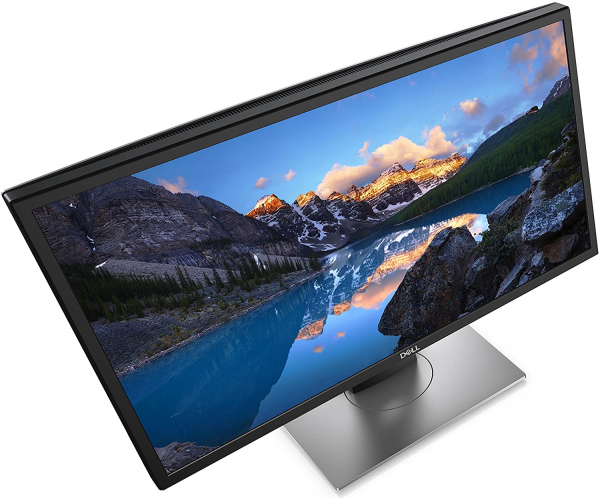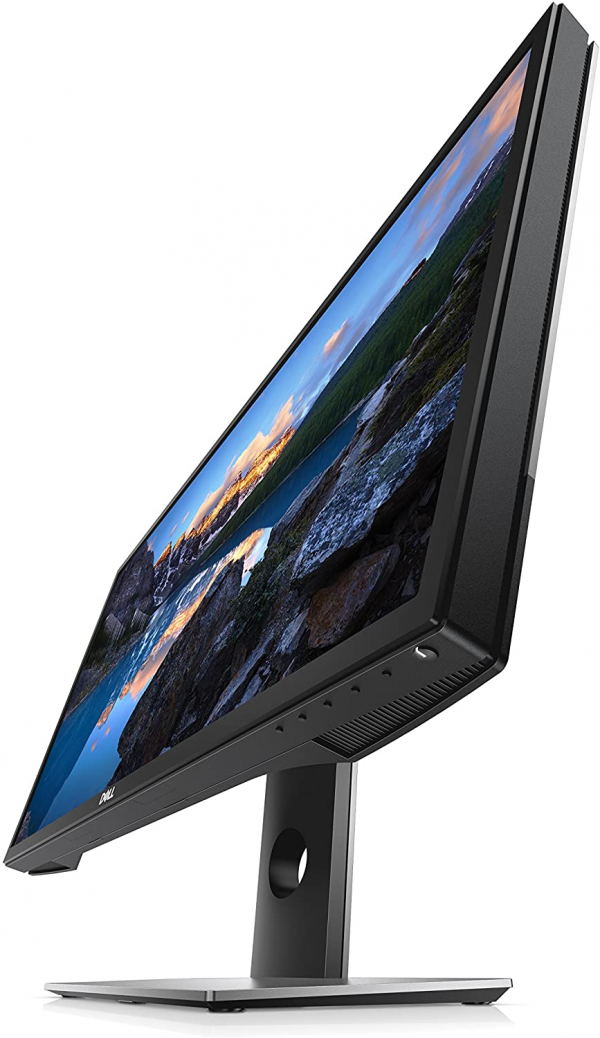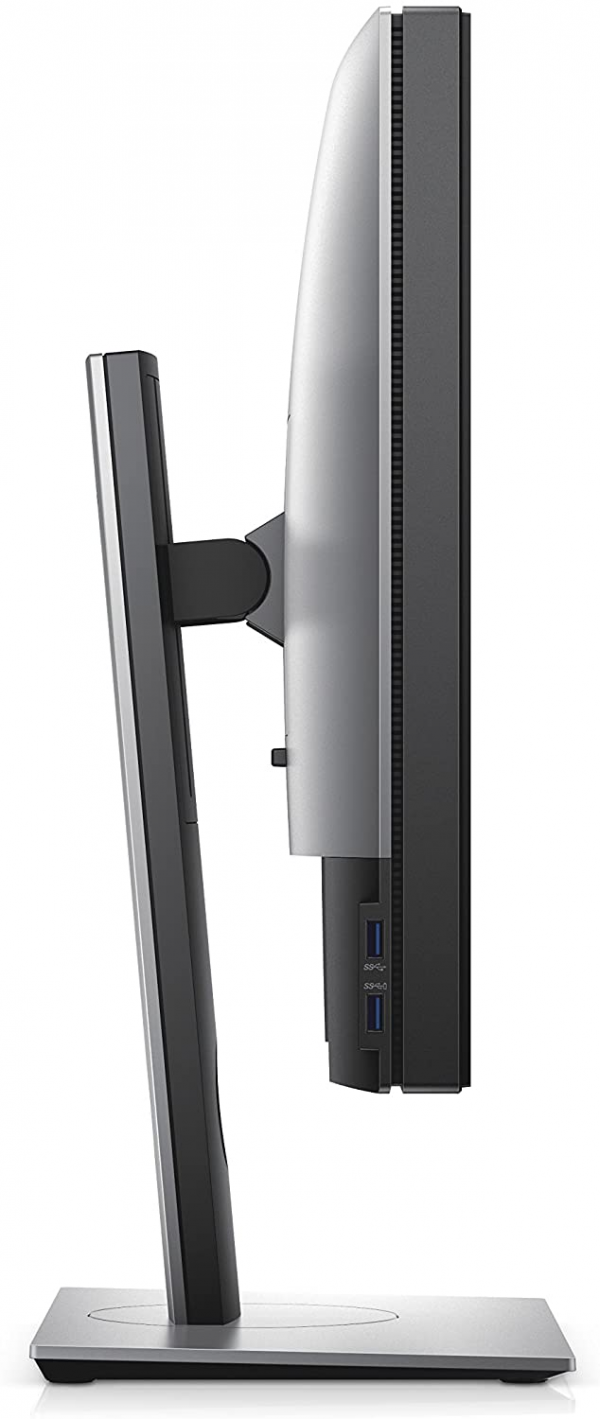Dell
Dell UltraSharp UP2718Q: HDR lands on PC
Aprox. 1921€
See specificationsThe Dell UltraSharp UP2718Q monitor is the first true HDR monitor to arrive at the editorial office. It arouses curiosity, but also some questions about the functioning of HDR on a PC. This is an opportunity to answer questions.
Positive points
Image quality in sRGB mode.
Exemplary ergonomics.
USB 3.0 hub.
Open viewing angles.
Connectivity.
Integrated keyboard-mouse-screen switch.
Bad points
Interest of HDR?
Poor management of Full Led backlight.
Our review
Presentation
The Dell UltraSharp UP2718Q monitor has a 27-inch (≈68.6 cm) IPS panel with an Ultra HD resolution of 3 840 x 2 160 px. It stands out from all the other monitors by its Full Led backlight system composed of 384 zones: enough to reach the famous light peak of 1000 cd / m² in order to make the most of HDR content.
The Dell UltraSharp UP2718Q monitor does not really have a direct competitor on the market which allows Dell to sell it for around € 2,000.

Ergonomics
No frills in terms of design: it is still very classic at Dell. The materials chosen are of quality and the finishes are exemplary, as always or almost on the manufacturer's UltraSharp range.
This monitor offers all the possible settings: height adjustment of 14.5 cm, tilt from -5 to + 21 °, rotation of +/- 45 ° and a pivot to switch to portrait mode.
Level connectivity, the Dell UP2718Q is well supplied, even if it ignores the "old connectors" like DVI or VGA. There are therefore two HDMI 2.0a inputs, a DisplayPort input, a mini-DisplayPort input, a hub with 4 USB 3.0 ports, two of which are on the side, and a headphone output. The two USB inputs allow you to use the KVM switch; the first is connected to one machine, the second to another.
Like many manufacturers, Dell chose a series of buttons placed on the bottom edge to make the adjustments. The menus are clear, but the placement of the buttons still requires real brain gymnastics to access the different settings. We definitely prefer the joystick from Asus, Philips or AOC, which is much more intuitive.
We measured a consumption of 44 W on our test pattern with a white calibrated at 150 cd / m². Relative consumption peaks at 219 W / m²; it is very high, especially compared to the other monitors in our comparison, the average of which is 100 W / m². This excessive consumption is explained by the use of a Full Led system composed of 384 diodes, while most monitors use a single led bar located at the base of the panel.

Colors and contrast
Default: average gray temperature: 7.420 K.
Default: gamma curve at 2.2.
Default: Delta E average at 4.6.
The default monitor calibration is special. The cold colors (7 420 K) are not really faithful. Delta E, at 4.6, is therefore greater than the threshold of 3 below which the human eye no longer perceives the difference. The gamma curve lacks stability, even if the average is good (2.2). This is explained by the factory configuration chosen by Dell. The monitor is set to standard mode with a dynamic backlighting system which notably explains the instability of the gamma.
Manual adjustment: average gray temperature: 7,300 K.
Manual adjustment: gamma curve at 2.2.
Manual setting: average delta E at 1.3.
So we went into sRGB mode and we adjusted the brightness to 35% to obtain a white at 150 cd / m². The colors become almost perfect, with an average delta E of 1.8. The gamma curve stabilizes with an average modeled on that of reference (2,2). Finally, the temperature drops slightly (7,300 K), but the rendering remains cold, especially since it is impossible to lower the temperature without touching the other settings.
Calibrated: average gray temperature: 6,490 K.
Calibrated: gamma curve at 2.2.
Calibrated: average delta E at 0.9.
Calibrating the monitor with a color profile makes it possible to smooth the temperature curve, this time obtaining a value of 6,490 K. It is stable over the entire spectrum. The gamma curve remains identical with always a slight drop on the end (the very light grays are slightly overexposed). Finally, the colors are still a little more accurate, with a delta E less than 1. You can download this color profile by following this link.
The Dell UltraSharp UP2718Q monitor is equipped with an IPS panel delivering a contrast of 1080: 1, very common for IPS technology. It is nowhere near as good as the best VA screens, like the Eizo Fortis FG2421 or the BenQ BL2410PT which exceed a contrast of 3000: 1. In return, the viewing angles are better.
The average difference in uniformity is measured at only 7% over the entire 27-inch panel and we did not find any light leaks or clouding.

Reactivity
The Dell UP2718Q does not use Pulse Width Modulation (PWM) to adjust the brightness. It therefore does not flicker and does not cause headaches or eye problems in sensitive people.
By default, reactivity is fairly average for an IPS panel (measurement of remanence at 12 ms). This monitor should therefore not appeal to players looking for high responsiveness, but it will be suitable for all other uses, whether movies, office automation or even casual or solo play. The monitor offers two settings for the overdrive: normal or fast, which does not change.
Finally, we measured the display delay at only 10 ms. There is thus no lag between the action and its repercussion on the screen.

Conclusion
The Dell UltraSharp UP2718Q is an excellent screen for image professionals who seek above all a perfectly calibrated monitor with flawless ergonomics. On the other hand, the argument of HDR falls completely into the water because of the low native contrast of the panel and the backlighting system, which can be greatly improved.
Specifications

